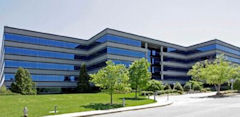Speaking of economic development (see previous post), give Henrico County credit for thinking differently. The Henrico County Economic Development Authority is marketing the county as an alternative, low-cost location for companies in the Washington region. I’m not sure the EDA has formulated a winning sales pitch yet, but as long as it keeps tinkering with the message, it might have a winner.
The county has started contacting people at about 500 companies in the Washington region. “We’re thinking they may be considering moving either all or part of their business to a less costly environment,” Gary McLaren, executive director of the EDA, told the Times-Dispatch. Companies relocating from the Washington area can save 20% to 40% on labor, office leases, utilities and taxes, according to a Henrico EDA brochure quoted by the newspaper.
Washington is moving farther and farther south, as it is, says Tuckahoe District Supervisor Patricia S. O’Bannon. “It’s almost a continuous suburb between Fredericksburg and Washington, D.C. It’s an easy step to come further south.”
If the T-D article is any indication, however, the brochure also cites what seems to be a lot of irrelevant information. The fact that Henrico is located at the intersection of two interstates and is within a one-day reach of nearly 60% of the U.S. population probably won’t mean much to tech-savvy Washington-area companies who are the logical prospects for the office space, like the former Circuit City complex, that the county is marketing. Unless the EDA is targeting the remnant of the Washington region’s industrial sector, I also can’t see Washington-area companies drawn by enterprise zones.
Businesses don’t locate in the Washington region for the low cost of land, labor and utilities. They locate there either (a) to be close to the action in the federal government, (b) to access the region’s highly educated, highly skilled labor force or (c) to interact with other companies in the same densely populated business ecosystems. It’s all about tapping into knowledge and information resources. Some companies may be willing to relocate back-office operations to the Richmond region, but only if they can be assured of finding employees with the requisite skills.
That’s not to say Henrico can’t offer a good pitch. Capital One Financial could be a great advocate for Henrico in Northern Virginia. The path-breaking credit card company actually launched in the Richmond region as a spin-off of the old Signet Bank, then moved its headquarters to Tysons. It maintains a large operations center here — the largest private employer in the region — that performs a lot of high value-added product innovation and execution. In theory, if Cap One can prosper here, other technology-intensive companies can, too.
Henrico also can strengthen its allure as an economic satellite of the Washington region by improving inter-city rail service. As I’ve noted on this blog before, the Staples Mill Amtrak station carries the largest passenger volume of any station in the South. Aside from working to upgrade the frequency and speed of the rail service, Henrico also should consider rezoning land around the rail station to accommodate mid-density, mixed-use re-development. One way to interest Washington-area companies in in the region might be to provide them a transportation option that bypasses the congested and unpredictable Interstate 95.
In any case, nothing ventured, nothing gained.
— JAB



